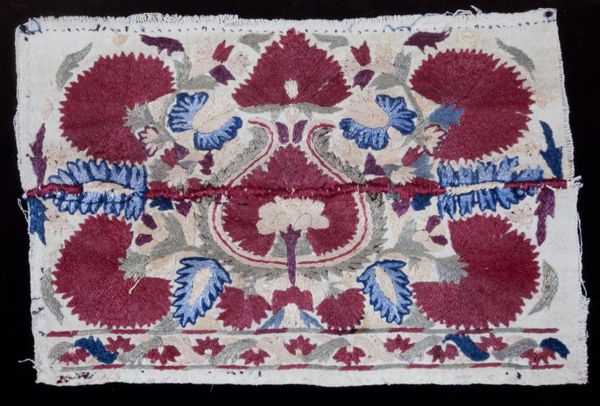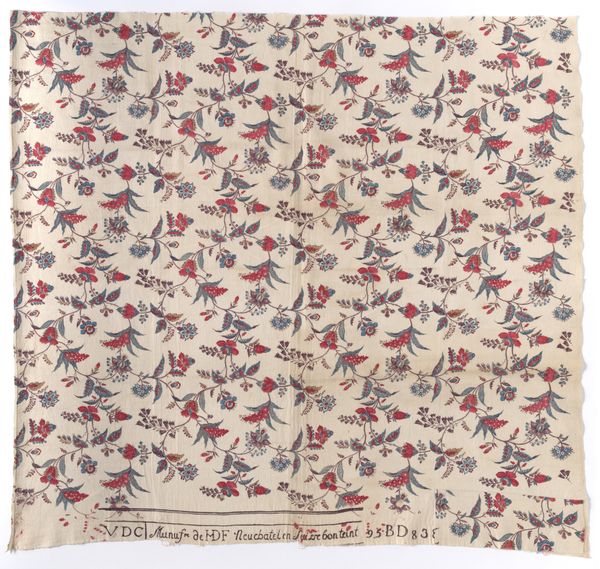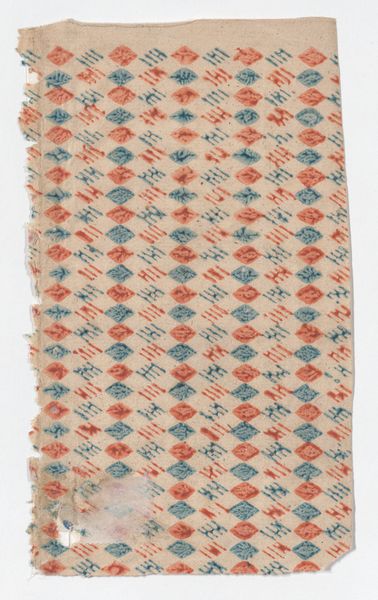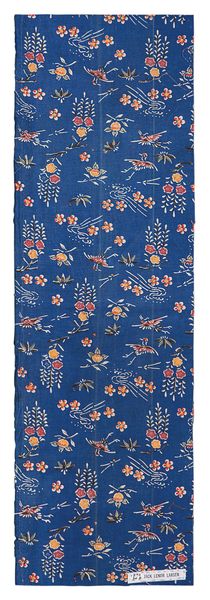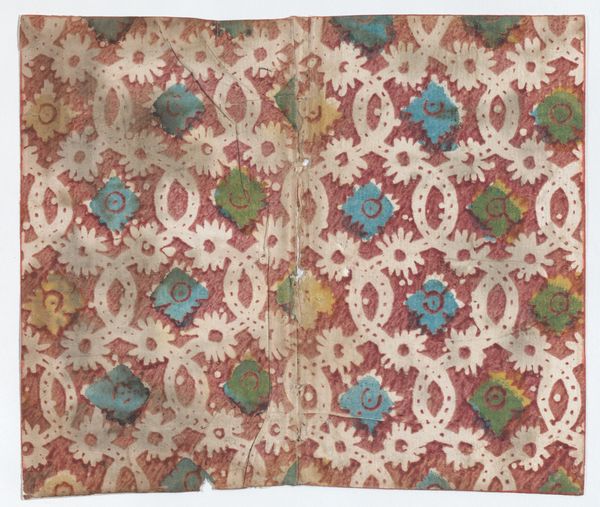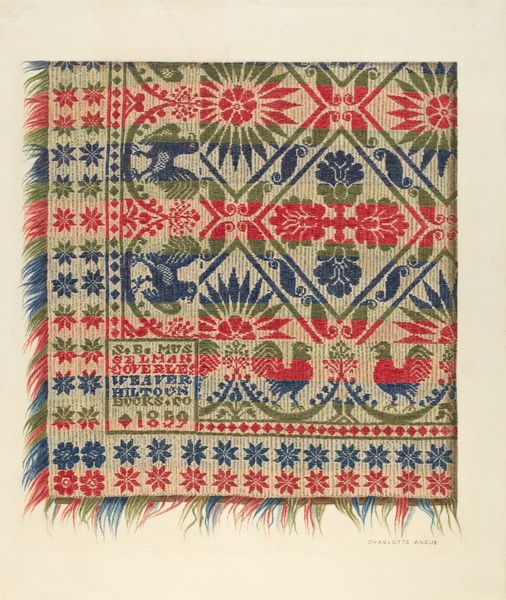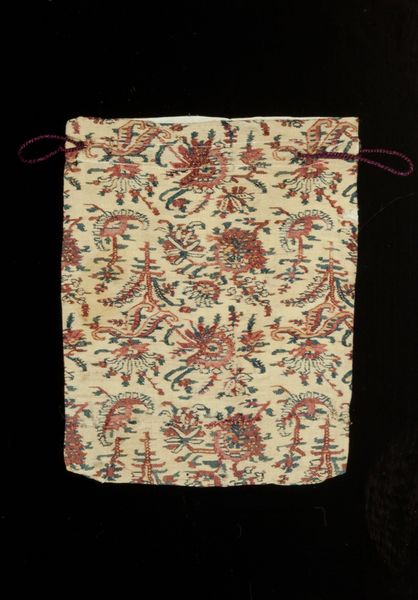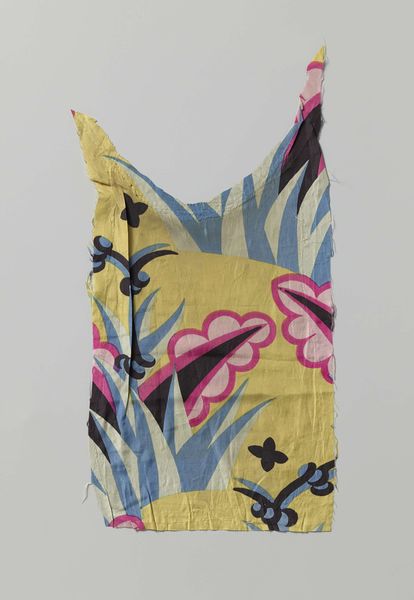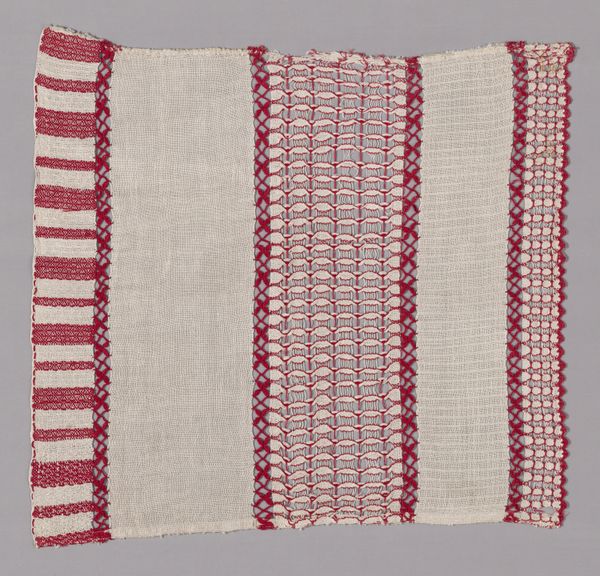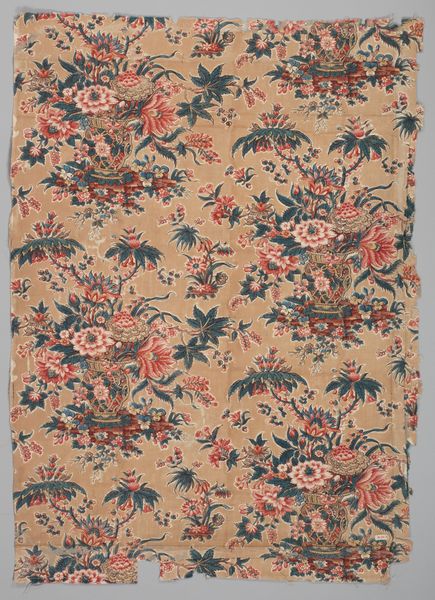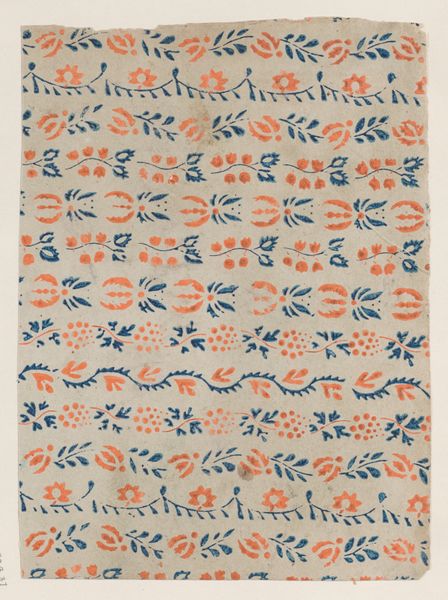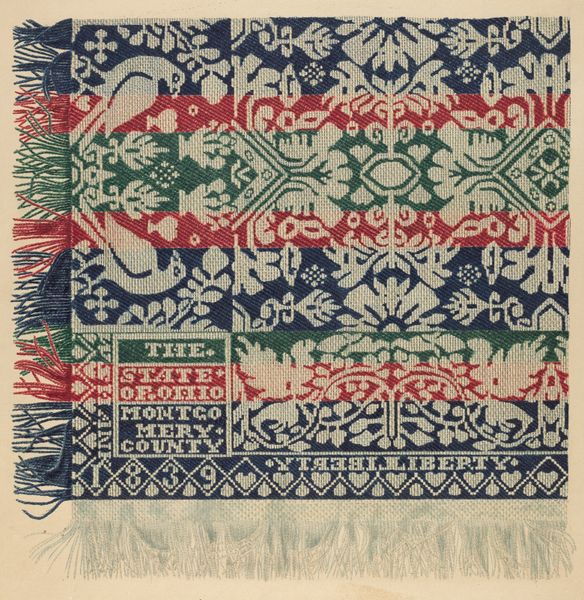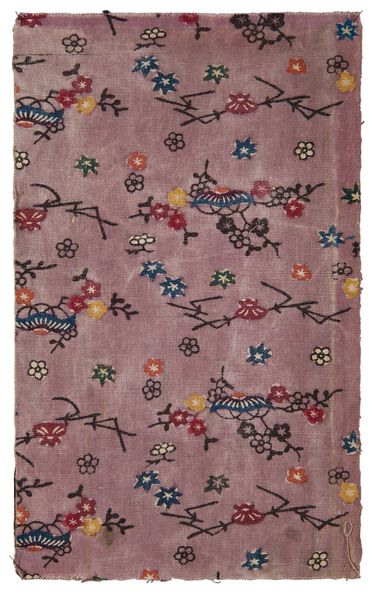
textile, cotton
#
pattern heavy
#
textile
#
collage layering style
#
fashion and textile design
#
hand-embroidered
#
embroidery
#
repetition of pattern
#
pattern repetition
#
cotton
#
textile design
#
imprinted textile
#
layered pattern
Dimensions: 15 3/4 x 12 7/8 in. (40.01 x 32.7 cm)
Copyright: Public Domain
Curator: This is an 18th-century textile piece from an anonymous artist, showcasing a pattern-heavy design on cotton and silk. The imprinted textile integrates hand-embroidered elements in a collage layering style. What strikes you about this work? Editor: I am intrigued by how fragmented the overall design seems, even though it's clear the artist intended some form of pattern and repetition. How do you interpret this combination of order and disorder? Curator: It's vital to recognize that textiles of this period weren't merely decorative. They represented a complex interplay of social, economic, and political power. What if this seeming fragmentation reflects disruptions in trade routes, or even social hierarchies, during the 18th century? Consider how textiles were both commodities and signifiers of identity. Editor: That's fascinating. I hadn't considered how global events might be reflected in something as seemingly simple as a textile pattern. The layering style you mentioned earlier, could that also be a reflection of complex cultural exchanges? Curator: Precisely. Layering could symbolize the superimposition of different cultural influences, potentially pointing to colonial histories or the blending of aesthetic traditions. What colors and motifs stand out to you, and what cultures might they represent? Editor: The blues and reds feel quite vibrant, perhaps referencing specific dyeing techniques or imported materials. I'd need to do more research to connect them to a particular cultural origin. This piece definitely encourages a deeper investigation beyond just the surface aesthetics. Curator: Absolutely, and this textile invites us to question the presumed anonymity of the artist. Although attributed as anonymous, whose labor produced this? Who profited? Thinking critically about these power dynamics is crucial in understanding the full scope of the artwork. Editor: I never considered the politics inherent in textiles. This really changes how I will approach art history moving forward. Thank you. Curator: Remember, even a small fragment of fabric can unravel vast narratives about power, identity, and the interconnectedness of history.
Comments
No comments
Be the first to comment and join the conversation on the ultimate creative platform.
